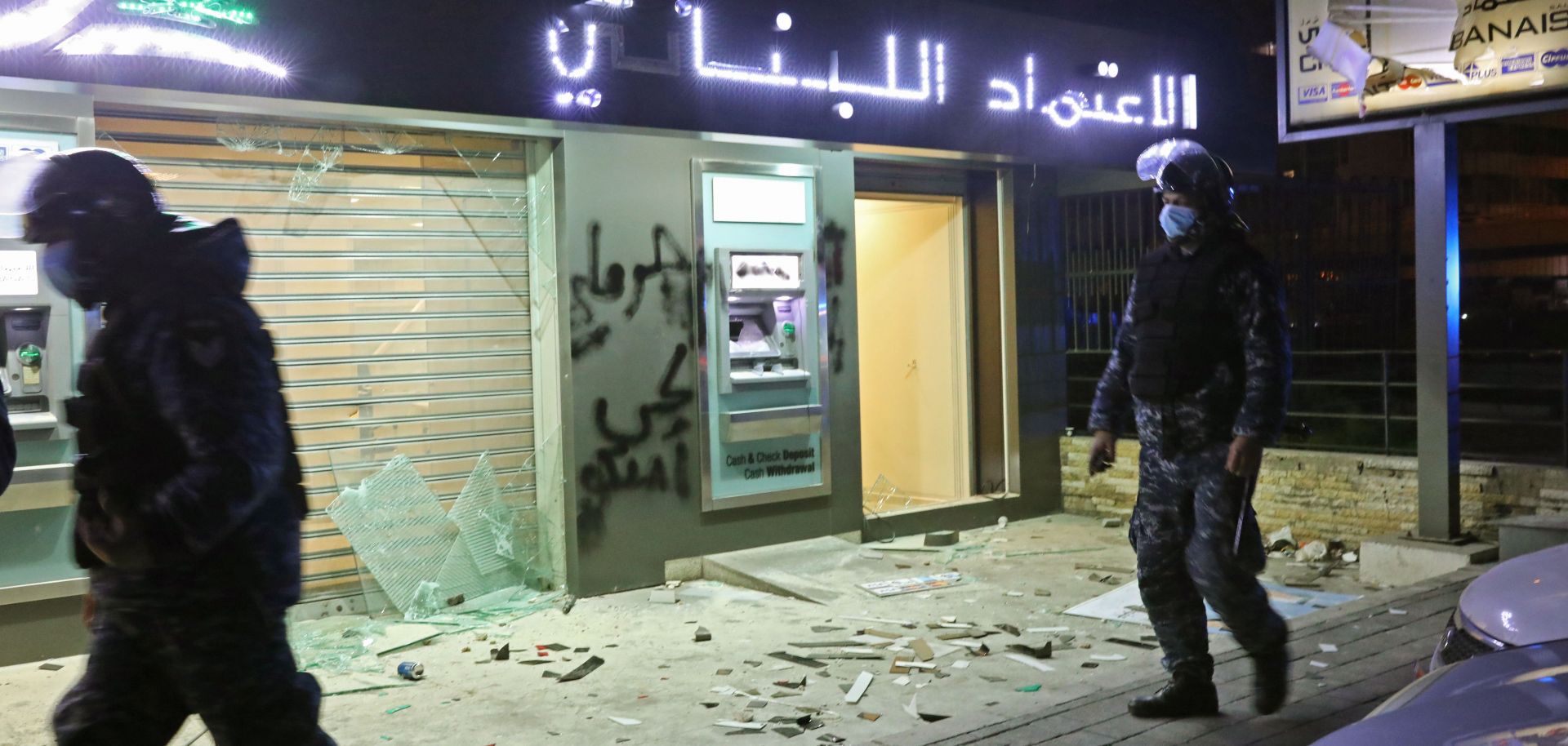ASSESSMENTS
Lebanon Stands on the Edge of Spiraling Violence


Jan 17, 2020 | 11:00 GMT

Lebanese riot police walk past the branch of a vandalized bank in Beirut after anti-government protesters took to the streets on Jan. 16. As the violence grows, so will the odds that armed sectarian factions will confront the demonstrators.
(ANWAR AMRO/AFP via Getty Images)
Highlight
- Protesters have adopted more aggressive tactics to pressure Lebanon’s fractured government and to express anger at the country’s economic situation.
- But Lebanon still has no functioning government, and the ongoing political paralysis appears likely to only worsen the economic crisis.
- Lebanon’s political factions will increasingly consider escalating their own tactics, deploying their armed supporters to counter the protest movements. A corresponding uptick of violence could erode the country's security.
Subscribe Now
SubscribeAlready have an account?
